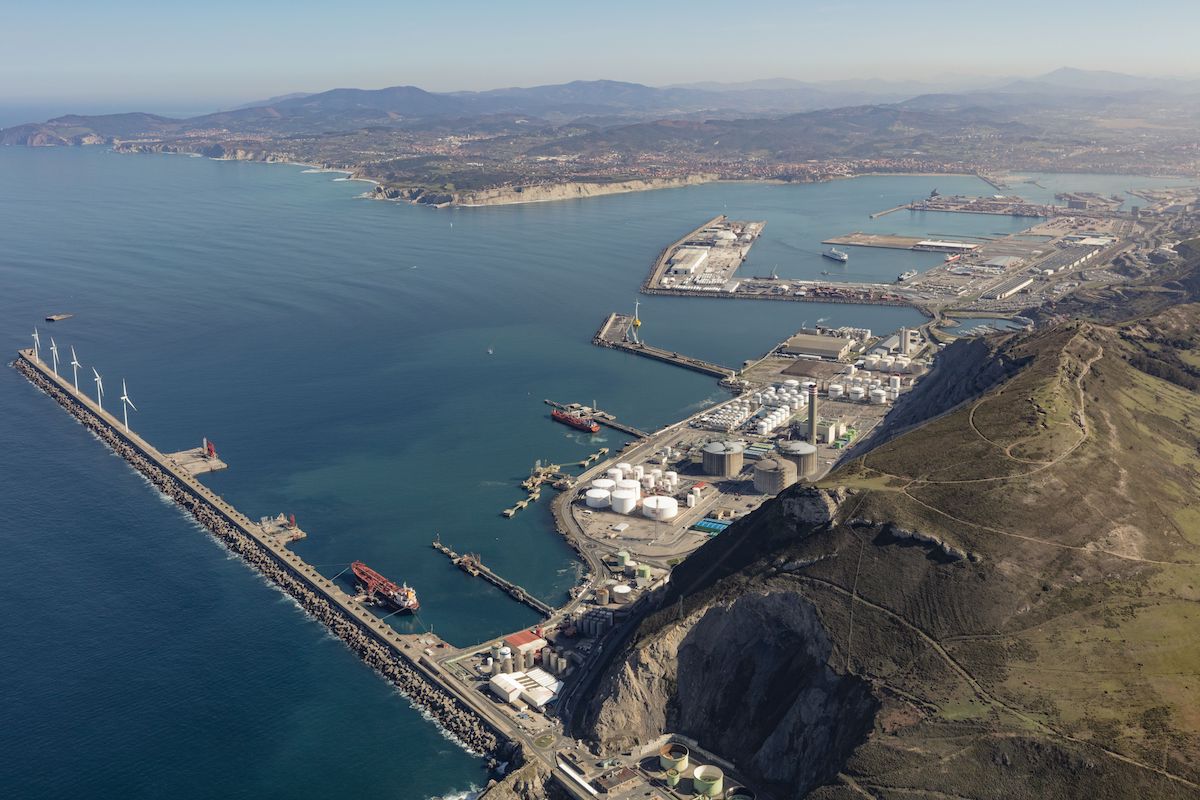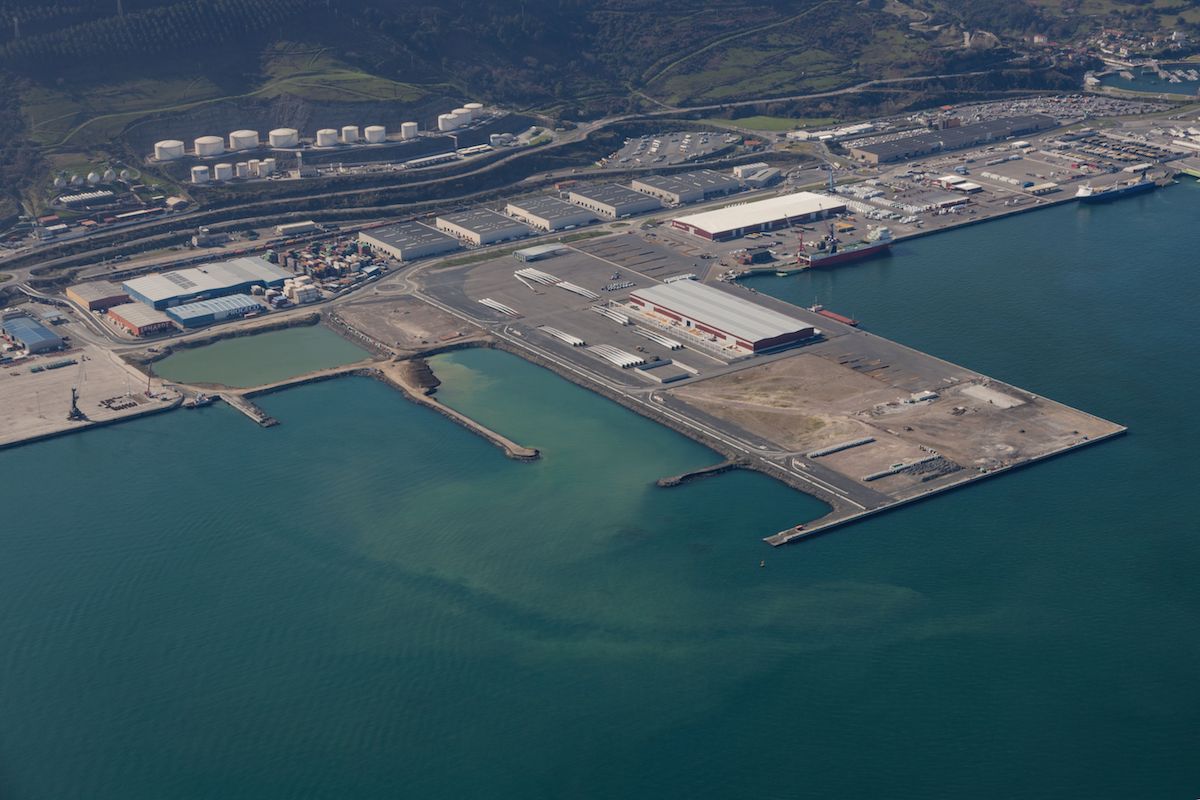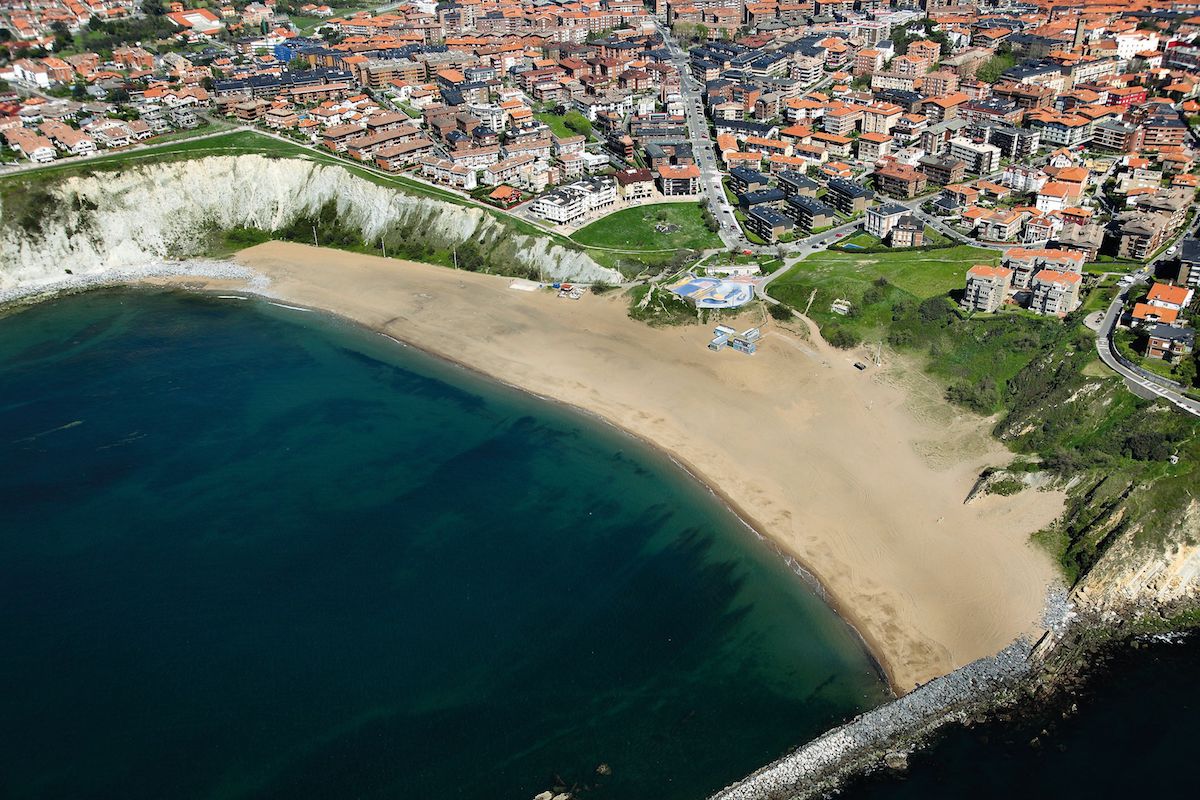The President of the Port Authority of Bilbao, Ricardo Barkala, has reviewed the current situation of the Port of Bilbao, covering, among other issues, the trend in traffic, connectivity, the Business Plan for 2024 and the creation of new land.
Regarding total traffic through the Port of Bilbao, the trend exceeds that of the average of state-owned multi-purpose ports. For the first four-month period of the year, accumulated year-on-year growth stood at 3.9%, whilst on average, state-owned multi-purpose ports showed a negative trend of -1.9%. With regard to the number of TEUs, container traffic in the Port of Bilbao is up 8.8% in the first four-month period of the year, while for the same period (based on latest available data), the average for state-owned multi-purpose ports was -8.3%, with significant decreases seen in the three main ports.
Provisional forecasts up to the end of May for the Port of Bilbao show an accumulated growth of +3.12%, with total traffic in the first five months of the year standing at 13.4 million tonnes. With the exception of conventional goods, traffic of all categories of cargo is up: bulk liquids +3.7%, bulk solids +15%, conventional goods -8.3% and containers +0.3%. Likewise, passenger traffic stood at 56,421, with growth in both ferries and cruises and an overall percentage increase of +2.5%.
With the incorporation of the Galicia in April, Brittany Ferries’ two cruise ferries are equipped with state-of-the-art technology for energy efficient and sustainable shipping.
The positive trend in imports and exports is also reflected in rail-port traffic, with figures for the period January to May standing at 1,700 trains, an average of 85 per week. Furthermore, the Port Authority of Bilbao assumed management of rail traffic within the port last year and took on responsibility for shunting tasks to provide a universal, neutral and competitive service 24/7.
However, this improvement has not gone hand in hand with the development of new railway infrastructure. Bilbao is the port with the highest share of rail traffic but, despite this, any further growth may be curtailed due to the fact that the port has no option other than to share tracks with passenger services. Use of the tracks is close to saturation point and, furthermore, the infrastructure is limited in terms of gauges and train lengths. Consequently, the Port Authority has repeatedly requested and continues to request the southern rail bypass project be taken forward as a matter of urgency, and that the rail infrastructure between Miranda de Ebro and the Port of Bilbao also be improved. As the main hub of the Atlantic corridor, the port is an important player in the economy, and the constant delays in the development of railway infrastructure could jeopardise its future.

Electrification of the docks
Bilbao is a benchmark Port Authority in the entire port system in terms of environmental management. An energy transition plan was drawn up in 2022 as a preliminary step towards the target of carbon neutrality by 2050. This target is fully aligned with EU Green Deal requirements for a 55% reduction in carbon emissions by 2030 and to achieve carbon neutrality by 2050, and is also aligned to the UN Sustainable Development Goals (SDGs).
To this end, the Port Authority has for many years been committed to and pursuing a sustainable environmental strategy. Examples of a wide range of measures taken include the replacement of all street and dock lighting with new eco-efficient LED lights; upgrading and renewing its vehicle fleet with vehicles that are mostly hybrid or directly electric; installing heat pumps in new buildings; sectioning off buildings to make more appropriate use of air conditioning in line with working hours; a new 100% renewable electricity contract; and an LNG refuelling station for supplying vessels, amongst others.
However, on top of all this, the largest challenge we face in terms of the environment is to reduce emissions from vessels moored in the port. To this end, plans are underway to enable all such vessels to connect to an onshore power supply (OPS), whereby their auxiliary engines can be switched off, pollutant emissions can be avoided and noise and vibration levels reduced. OPS is a disruptive and groundbreaking technology since the key elements of it are the devices that transform the electricity from shore power, voltage and frequency to those variables required for the individual needs of each vessel.
This work will be done in three phases. The first phase, which was put out to tender on 5 June, is the OPS at Pier A5. With a budget of EUR 5.4 million, it will provide this dock with the possibility for those vessels moored and operating there to have a land power supply. The works, which will take 20 months to complete, are part-funded by a EUR 4.3 million grant through the Recovery and Resilience Facility, and the whole project is also funded by the EC through the CEF Transport 2021-2027 programme.
The next step will be to provide the port with sufficient power for subsequent OPS developments at other docks. To this end, a new power supply point will be set up in the substation next to the Santurtzi Combined Cycle Power Plant, and this power (60 MW) will be channelled inside the port premises for use in the OPS facilities and for other uses by several port companies, such as Petronor (at its synthetic fuel plant) and Haizea Wind (at its new and extended facilities). The budget for this work, a tender for which will shortly be launched, is a further EUR 9 million.
The third and largest step will be to extend the OPS facilities to the rest of the port docks with recurrent traffic, such as the cruise ship dock. To this end, a subsea cable will be laid across the river from Santurtzi to Getxo. This last investment will amount to more than EUR 40 million.
A stand-out feature of this project will be the deployment of PV panels on quays, docks, building roofs and vehicle shelters to be built in the Brittany Ferries area. The aim is for more than 20% of the energy consumed by the OPS system to come from renewable sources.
New spatial developments in the Port
The Port of Bilbao has one of the highest space occupancy rates in the port system, with over 85% of available surface area occupied. For this reason, and due to the intense demand for space in the port from various operators, the Port Authority 2024 Business Plan provides for all relevant procedures to be initiated and a tender process to be launched for the Second Phase of the Central Breakwater.
This new quay, with an operational surface area of more than 30 hectares and a project cost of EUR 92 million, will be completed over a period of three years. The project is expected to be put out to tender at the end of the year and, to this end, the Port Authority of Bilbao is working with the State Ports Authority to ensure the application is processed as quickly as

possible by the Government. This procedure can take between one and three months in non-electoral periods, and is applicable to tenders from the General State Administration, as well as its dependent bodies, for works with a budget in excess of EUR 12 million.
What enables the Port Authority to address this significant level of investment, key to creating more land to meet the demand for space for strategic projects, is its healthy debt profile, having invested over EUR 1 billion over the last 30 years. In addition to this project to generate more space in the port, a study is currently being conducted as to how best to reorganise the scarce space available and to maximise the possibilities for development of the existing surface area within the port domain.
Tender for a second container terminal
At the end of January, the Port Authority launched a public tender for the concession of a second container terminal, with the aim of attracting new traffic and an incremental development of the logistics hub linked to the Port of Bilbao, to substantially further and improve the competitiveness of its hinterland. This new project is designed to be complementary to the current container terminal by attracting new and additional traffic and, under no circumstances, by transferring containers from one terminal to another. In addition, several operators, represented by some of the most important shipping companies in the world, have shown an interest in the project. In other words, the Port Authority was and is of the opinion that the minimum requirements included in the terms and conditions of the tender need to guarantee the delivery of the objectives we have set ourselves and that they are good for the port, whilst at the same time acknowledging that the requirements were important.
In the course of the tendering process, several firms once again expressed their interest in the project, and a series of intense contacts and meetings were held. In response to this interest, an extension of the deadlines set for the submission of bids was requested and granted. However, in spite of this, the deadline for submitting bids ended on 29 May and the tender was declared void as no bids had been submitted.
There were several reasons for this. On the one hand, the Port Authority of Bilbao insisted and required that all proposals be aligned and adapted to the objectives of the regulatory specifications and be rigorous in their approaches and commitments, given the scarcity of port space. On the other hand, the changes requested by certain interested parties to the terms and conditions set out in the tender and concession specifications were not in line with the strategic vision of the Port Authority and, therefore, could not be accepted.
The Port Authority not only continues to see this tender as an opportunity, but believes this path should continue to be followed, with a view to trying to match up the strategic vision of the Port of Bilbao with the position of various international operators interested in developing their business in a sector as competitive as the container sector. The Port Authority of Bilbao has also held firm to the idea that not just any project would be suitable or sufficient, and has made this clear to all interested parties, as approval would only be given to those business proposals that would contribute new market shares and generate added value to the port-logistic activity. In short, proposals that would increase the competitiveness of the Port of Bilbao and its hinterland, with no adverse effect on the existing ecosystem.
The Port Authority of Bilbao would like to thank all the operators who have participated in this process for their interest. We would also like to convey the message that although, on this occasion, it hasn’t worked out, this initiative was something that needed to be taken, and was not an error on our part. Fortunately, there are many other projects on the table that need to be rolled out and developed in the port, all of which shall be studied to decide which of them are of the greatest interest to occupy the current available surface area. The reality is that, at the moment, not all requests can be met due to a lack of land.
Sale of the Olabarri Palace
The deadline for submitting bids for the public auction announced in March for the sale of the plot of land and building complex of the Olabarri Palace in Bilbao closed on 2 June, with a starting price of EUR 10,470,798.82, excluding taxes. Despite the fact that interest was shown by a number of firms in acquiring the building, and that those same parties have made various enquiries and visits to the building over the last few months, the auction procedure has finally been declared void.
Once the stipulated period of time has passed, the possibilities and the market context will be further analysed to subsequently take the appropriate decisions, without prejudice to the fact that the building is still for sale and can be acquired if the starting price is met, without the need to call a new auction procedure, as stipulated by law in this type of public procedure.
Beach bar on Arrigunaga beach
Today, 6 June, the application for a concession to set up a beach bar on Arrigunaga beach in Getxo has been submitted for public consultation for a period of 20 days. Thus, if the procedures stipulated in the regulations are met, the concession will likely be approved in July by the Board of Directors, after which it will be the responsibility of the Getxo Town Council to award the activity licence.
The previous administrative process included a fair competition procedure which, though not compulsory in this case, was followed to ensure transparency, competition and equality of conditions in the selection process for the management of this activity, with two bids having been submitted. The project finally selected by the Board of Directors proposes the occupation of an area of about 185 square metres, considerably smaller than the other bid, and will be a removable fixed structure, adapted to all types of users and incorporating appropriate environmental measures. Planned investment amounts to EUR 146,000 and the proposed concession period is fifteen years.


 Port access
Port access